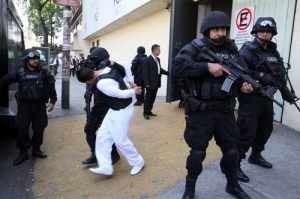The number of people detained for drugs possession in Mexico’s Federal District has increased 450 percent since 2002, the chair of the municipal health commission said.
Congresswoman Maricela Contreras, a member of the Party of the Democratic Revolution (PRD), told La Jornada that micro-trafficking has increased exponentially in Mexico’s capital. Thirty percent of the city’s emergency calls consist of citizens reporting neighborhood drug deals, she added.
Street-level dealers make an estimated salary of 300 pesos (about US$25) a day, she said, compared to the minimum wage of 54 pesos (about US$4) a day.
Mexico passed a law against mico-trafficking in August 2009, legalizing personal possession of small doses of cocaine and marijuana. The decree was intended to target street-level dealers while cutting back Mexico’s incarceration rates. The convict population has boomed over the last decade, reaching 227,021 detainees in 2009, about 90,000 more persons in prison than in 1999.
But so far there is little evidence that the decriminalization has had any effect on reducing overpopulation, and detention centers remain crowded with first-time offenders. According to a report prepared by the Washington Office on Latin America, 50 percent of prisoners incarcerated for selling drugs in Mexico’s Federal District were arrested for possessing less than $100 worth of narcotics.
“In 2008 not a single person was detained in the Federal District for transport, supply, production, or trafficking,” the report notes. According to the data compiled by WOLA, the prison population in the Federal District has nonetheless increased 84 percent since 2002, in part thanks to the continued targeting of small-time dealers and addicts.
This increase in urban micro-trafficking is a trend observed across the region, not just in Mexico. Increased “narcomenudeo” has also been reported in Guatemala, El Salvador and Honduras, where local gangs stockpile cocaine from Colombia and flood the domestic market with product.
In Colombia, the rise of neighborhood drug plazas has led to increased homicides and extortion in cities that traditionally are unimportant links in the drug-trafficking chain, like Villavicencio, Meta, or Cucuta, Northern Santander. The problem of Colombia’s domestic drug trade has grown so severe that the government drew up a revised security policy intended to tackle the problem.

